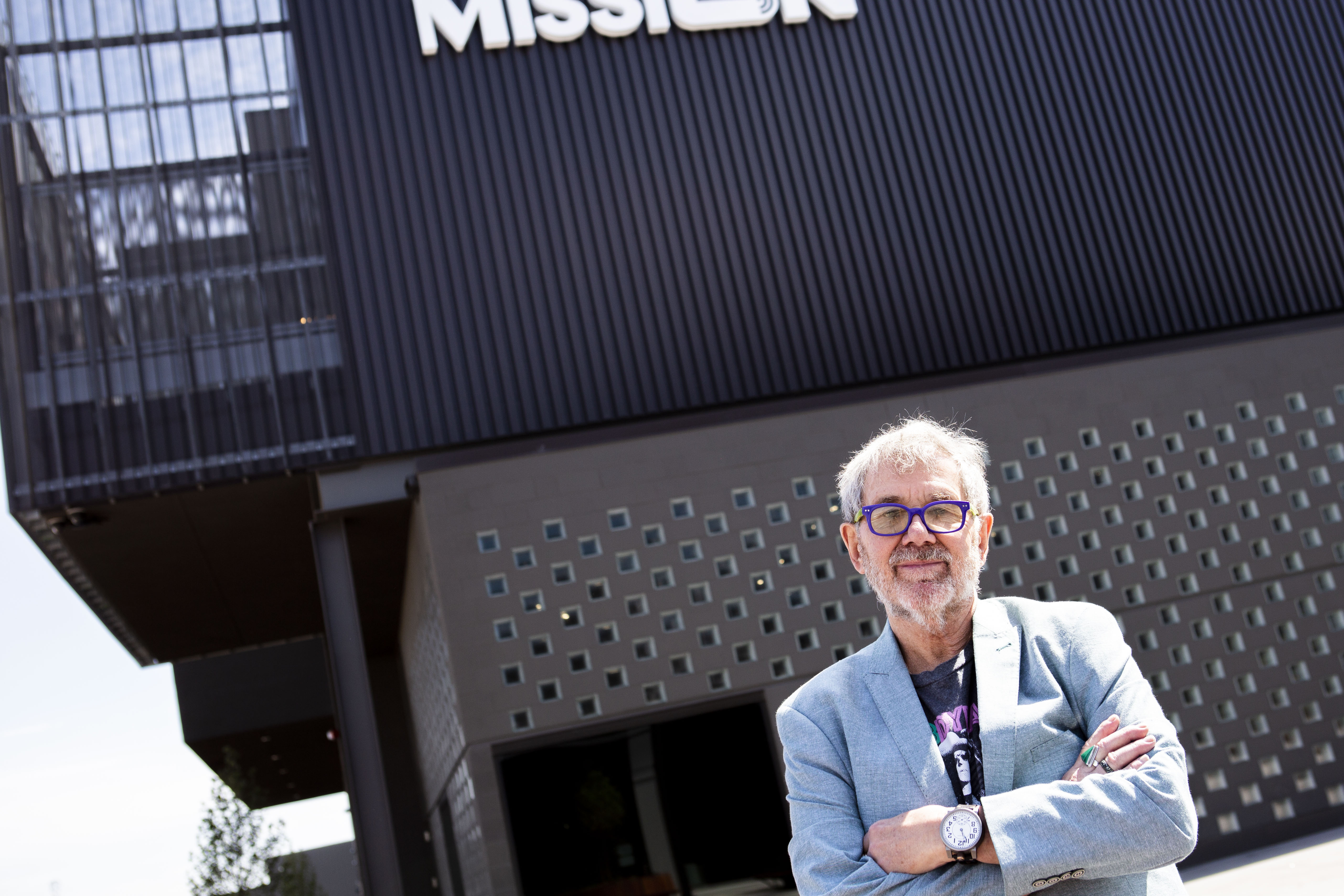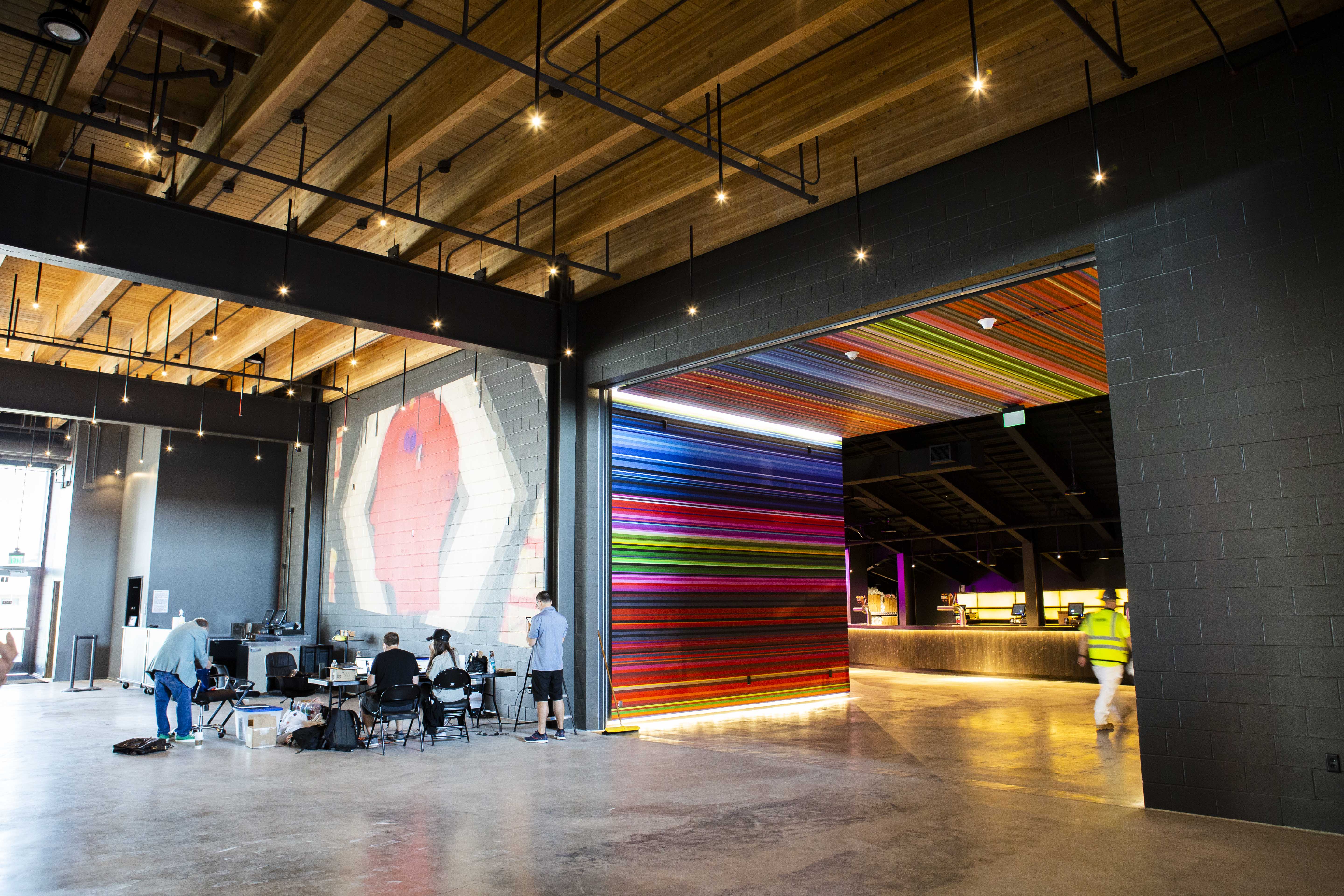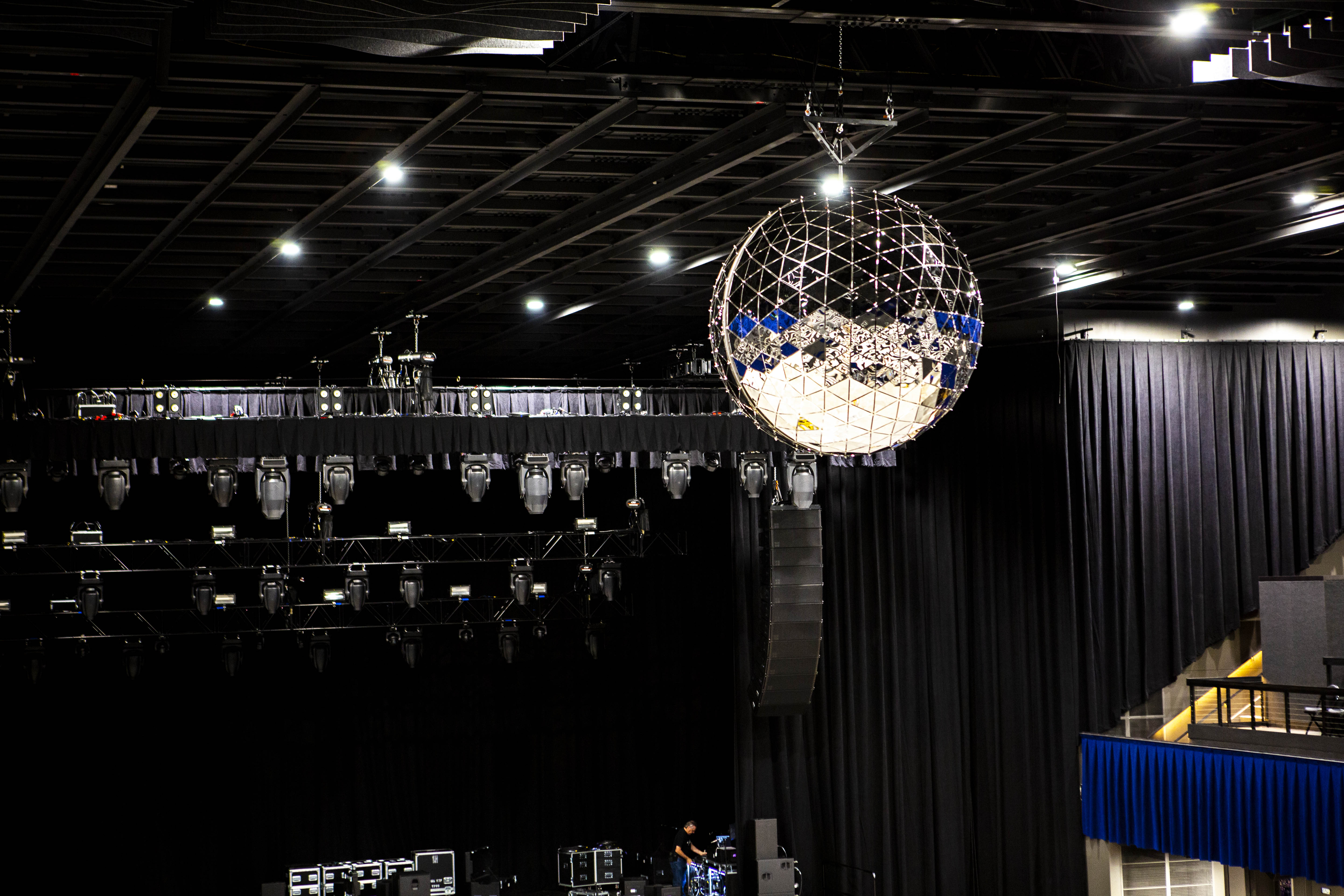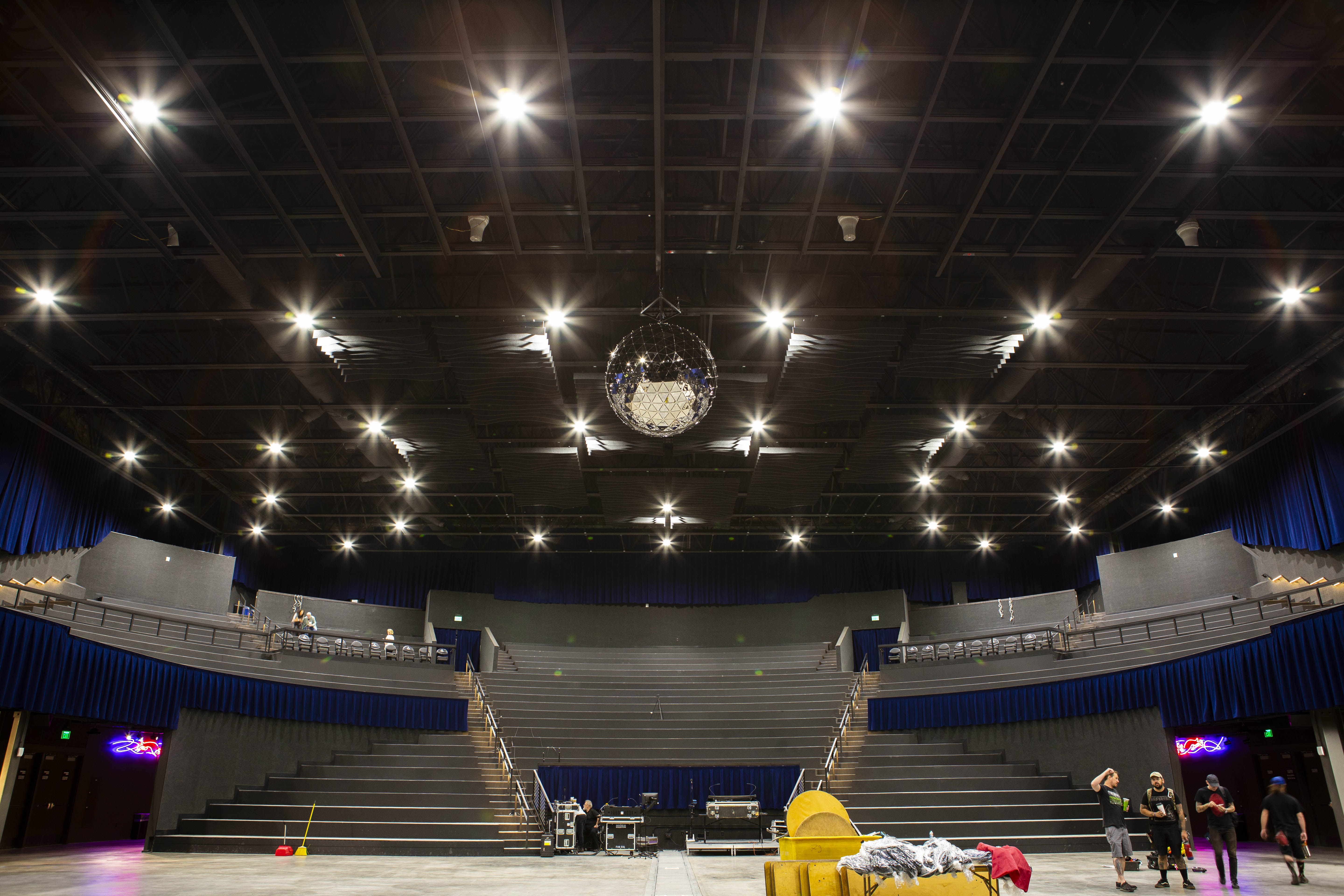“The hardest part was the name. It’s always the hardest thing. Yeah, not really, but you know. It feels like it. Basically, one of us said, you know, ‘we’re really on a mission to build the finest ballroom this town’s ever had’ and we all started screaming. ‘There’s the name! The mission.'” Chuck Morris, CEO of AEG Presents Rocky Mountains, stands over the entrance of Mission Ballroom, pointing over to the sidewalk, showing us around all of the developments rooting themselves up as we speak. Hard hats, hard sun and a picture-perfect opportunity, followed by a handshake and a slew of “see you later’s” permeate the ground floor, the spot everyone wants to go into and everyone wants to talk about.
READ: Chuck Morris Reflects On His Legendary Career Before Hall of Fame Induction

Mission Ballroom is already famous and it hasn’t even opened yet. Its inaugural performance with The Lumineers on August 7 will only cement the venue further into the concrete that is Denver’s RiNo district, changing the landscape of this city in ways that scream progress and forward-thinking, even in a segment of land that some would argue would rather rewind. The reality is, regardless of differing opinions, RiNo isn’t going anywhere, and AEG Presents — one of the world’s leading live music companies — just added to that notion with a monolithic state-of-the-art ballroom that everyone will want to be a part of.
READ: A First Look at The Psychedelic Local Art Inside The New Mission Ballroom
We got to tour the venue before its opening and chat with Morris about what this really means for Denver and how revolutionary this building is actually going to be for the music scene. It’s a hard sell with all of the incredible venues spread across the state, but Morris knows that better than anyone else. He helped build most of them. “You know, this is a whole new thing. Seating 3,950 people and building it from the ground up. But we’ve got the other venues that we love and have worked hard on. The Ogden, we do great there. And the Gothic. And the Bluebird. And First Bank. We do 120 shows a year at Red Rocks and we took over Fiddler’s, remodeled it and made it beautiful.” The worries wash away the minute you step through those doors. Mission Ballroom is a passion project — modeled from the ground up — deeply rooted in an experiential understanding of the concertgoer in a truly unique way.
The decades of experience between all of the moving parts of the AEG wheel settle in the details around the venue. There are four bathrooms on the main floor — not to mention the additional ones spread out around the mezzanine and lobby — and enormous bars sweeping the entire space. We sat at the “worst seat in the house” only to see that there is no such thing. Every angle was accounted for, there are no obstructions in the view. The venue will sell general admission (GA) tickets for most shows as of now so the entire ballroom is open to those who wait, although there are two VIP sections with plush seats, reserved parking in the lot underneath the building and a separate bar to avoid lines. Even so, Morris’ team wanted to cater the experience to the avid fans and the musicians — there’s a line of GA seats right before the VIP section. “Here’s a little touch we did. VIP’s are great, but sometimes they’re more interested in doing business than watching the show. So we put the GA people in front of them so the band’s first look are the people standing in this GA. It’s a little touch, but yeah, we thought that was really important.”
The ticket lottery program first enacted in the space is not likely to make an appearance after this first week of shows. Morris essentially curtailed to comment on its efficacy, but it seems it was a growing pain that has been restructured.
An enormous disco-ball nestles itself right in between the pit. As is the case with all of the art in the building, the disco-ball was designed by a local artist Mike Lustig and fabricators Re: Engineering, who have worked on similar projects for Burning Man as well as the Tree of Transformation in Civic Center Park. The projections are rumored to hit the entire ballroom, providing an unparalleled visual experience for the concertgoer. The choice to go local on all art was curated by Kellie Donahoe. You can catch up on all of the beautiful pieces and the curation process in a separate interview here.
The stage itself can expand, changing from seating 2200 people to 3950, creating a sold-out experience for every show. I asked if they’d consider underselling a bigger headliner in order to emulate a more intimate setting as is the draw with venues such as The Ogden, and Morris emphatically agreed with the notion as if to say no idea is too wild, everything is in the cards for this magnum opus of a venue — the possibilities are endless.
Morris took us backstage, where the specific design touches were just as detailed for the musicians themselves. A loading bay for semi-trucks right next to the stage entrance, incredible floor to ceiling showers, vinyl and record players provided by Vinyl Me, Please, all paraded in between glorious works of local art. It was hard to stay fixated on one detail for too long, finding another intricacy around the corner. I expressed my admiration and Morris wasn’t having it. He wouldn’t accept the compliments unless they came with a very specific footnote. This was a team effort. “I certainly don’t want to take solo credit. No, I’m only as good as the people in our staff and my partners.” Everything was done because of his two partners Brent Fedrizzi and Don Strasburg and the entire team working on this day and night who he recalls by name and greets with a smile as we walk through the venue.
Mission Ballroom has 80 shows premiering just this year and they only plan to expand upon that in every way they can. AEG Presents Rocky Mountains plans on moving their offices across the street to a glass building facing the venue. The hall of fame exhibit will be in another building only about 200 feet away. A boutique hotel will nestle in between all of the bustle, sure to draw crowds of concertgoers and musicians alike — and all of these buildings will be on a closed-off road, away from car traffic in order to create an immersive oasis of high-end curation. How do you find parking? There’s plenty. Mission Ballroom is getting 30-person shuttles that will take you from the Denver Coliseum to the venue for free, not to mention the two-block proximity to the light rail and the parking lots surrounding the venue. The intentionality behind the choices makes this venue accessible and exclusive at the same time, selling a very important commodity to the average concertgoer — comfort.
There’s so much here to unpack, and with the opening to the public only a week away — a lot to look forward to.
Mission Ballroom will open to the public on August 7 with their inaugural concert featuring The Lumineers. You can find more information here.
Check out the full gallery of here:
Architecture by Works Progress Architecture
Developed by Westfield Company







